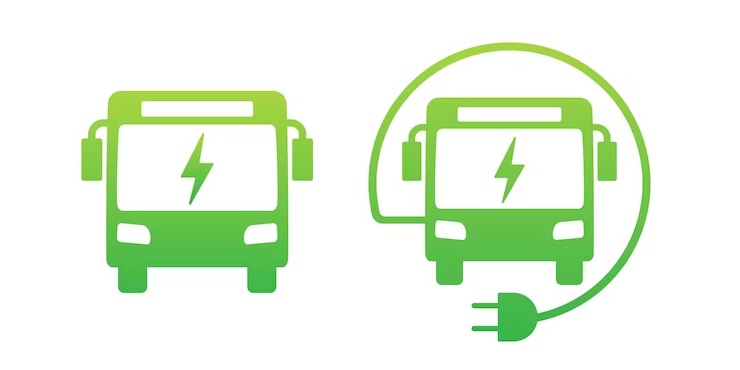Why carbon tracking is essential to fleet managers in government entities
One of the greatest tools in the fight against CO2 emissions is carbon tracking for fleets. Unfortunately, many public organizations don’t know where to begin or lack accurate reports to make data-driven decisions.
Just 30% of U.S. organizations track their Scope 1 and 2 emissions, while only 21% track their Scope 3 emissions. Since many public fleet managers manage distributed fleets (including a unique mix of diesel, gasoline, and electric vehicles), getting accurate figures may be complex.
Fortunately, tracking carbon emissions with telematics can provide government fleets with critical data for sustainability initiatives. The best carbon tracking tools also help with future greening initiatives and encourage other state and local agencies to join your efforts.
Here, we break down the concept of carbon tracking into easy, manageable segments.
What you need to know about carbon tracking
Carbon tracking for fleets refers to collecting, reporting, and measuring your fleet’s carbon emissions as you make progress toward reducing your liability. This includes implementing the strategies, tools, and processes needed to keep your organization on the right trajectory.
Fleet managers need three tools to successfully perform carbon tracking:
- Reliable data: You can collect operational data using telematics, GPS systems, and similar tools.
- Fleet software: This includes determining the number of vehicles under your care, as well as their mileage, fuel type, and idle times.
- Strategic plans: Strategic plans must include stakeholder input from drivers, managers, and utilities.
Are you curious to know what your current carbon output is? You can use this basic carbon tracking formula to come up with rough numbers:
- One gallon of diesel creates 26.82 pounds of CO2.
- One gallon of gasoline produces 23.12 pounds of CO2.
- If you have a gasoline-powered vehicle using five gallons of fuel per day (115.6 pounds of CO2) and one diesel-powered vehicle using ten gallons of fuel per day (268.2 pounds of CO2), you produce roughly 383.8 pounds of CO2 emissions per day.
Keep in mind that carbon tracking isn’t just for gasoline-related emissions. Depending on the size or focus of your industry, you may also want to focus on:
- Direct emissions (such as your maintenance equipment)
- Indirect emissions (such as your electricity source)
- Third-party emissions (those generated by third-party services working with your organization)
Let’s take a closer look at the benefits of carbon tracking.
The benefits of carbon tracking for your public fleet
Carbon tracking isn’t just a vanity metric. Used correctly, you can embrace long-term, sustainable benefits.
Benchmarking your decarbonization metrics
Government organizations rarely track their Scope 3 emissions, though knowing these numbers may be helpful for decarbonization purposes.
First, evaluate your third-party partnerships based on their relevance, size, and impact on your organization. Second, assess their relevant emissions factors, including energy, materials, and other activities. You can also rely on the company’s provided Scope 3 documentation, if any such report exists. This enables you to keep an eye on where you stand and identify areas of improvement.
Does this feel overwhelming or fall outside of your wheelhouse? Acquiring a Scope 3 platform to calculate and track these values may be a good idea.
Reporting status and process to stakeholders
Regularly publishing emissions reports can help organizational stakeholders get a better idea of your progress. It also reinforces your dedication to partner with organizations and members of your community.
Carbon reporting can also help you get ahead of future emission regulations. This is particularly relevant as greening initiatives heat up in North America.
Reducing waste and inefficiency
The more you understand your fleet’s carbon production rates, the more you can strategize specific solutions to stem the tide. For example, carbon tracking can help put a stop to regressive activities like idling, poor route planning, and suboptimal driving habits.
Keep in mind that you don’t need to increase your fuel efficiency by a large degree. In fact, studies show that a 1% increase in fuel efficiency leads to a 1.2% increase in vehicle miles traveled—a free gain of 0.2%.
Finding the right carbon tracking tools with Sourcewell
Carbon tracking is an accessible greening strategy for government entities looking to reduce their emissions footprint. However, fleet managers must acquire the right tools to get started, including hardware, software, and analysis platforms.
With Sourcewell, you can acquire the right carbon tracking resources to make more educated decisions for your public fleet. It offers:
- Fuel management, EV, and GPS solutions
- EV charging management software
- Fuel and fluid dispensing and management systems
- Fleet management technology for heavy-duty vehicles
- Fleet management solutions for smart cities
- Management consulting on energy, environment, and data science
You can browse the competitively solicited cooperative contracts online at any time.
By leveraging data and telematics, a fleet manager can identify areas for sustainability improvement by reducing a fleet's energy consumption and carbon emissions. Sourcewell contracts ensure that government entities can take the first step in supporting these initiatives. See how Sourcewell can help with your cooperative purchasing.


